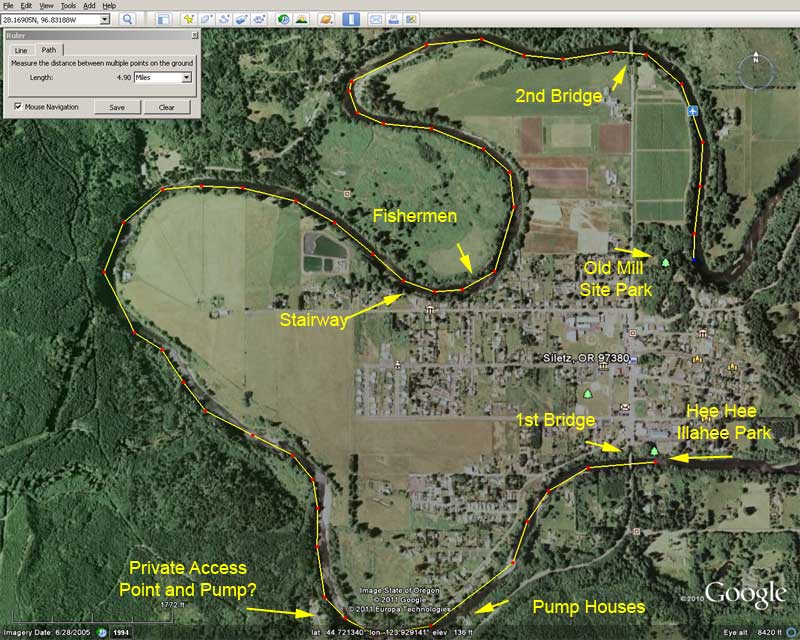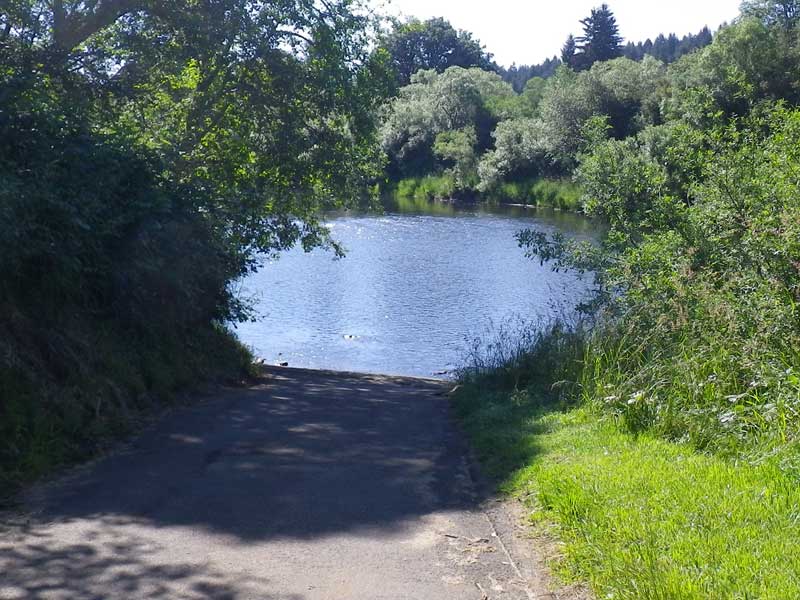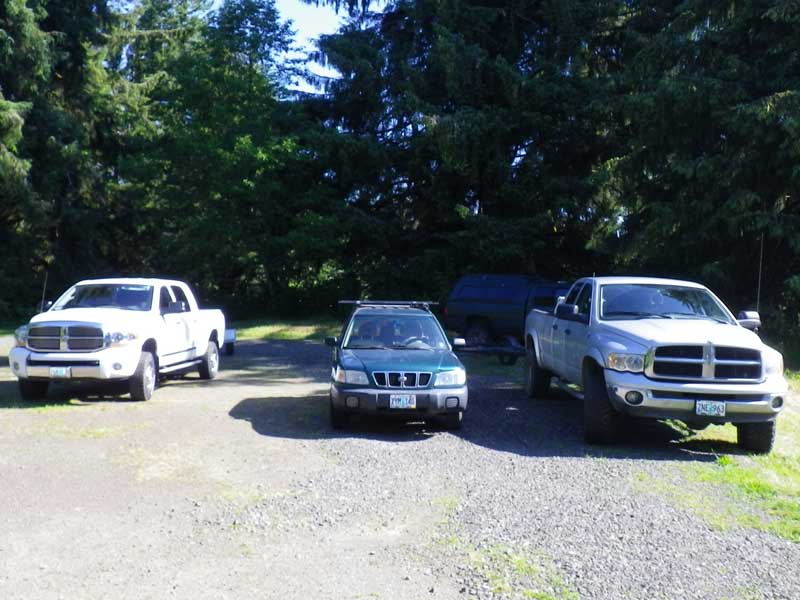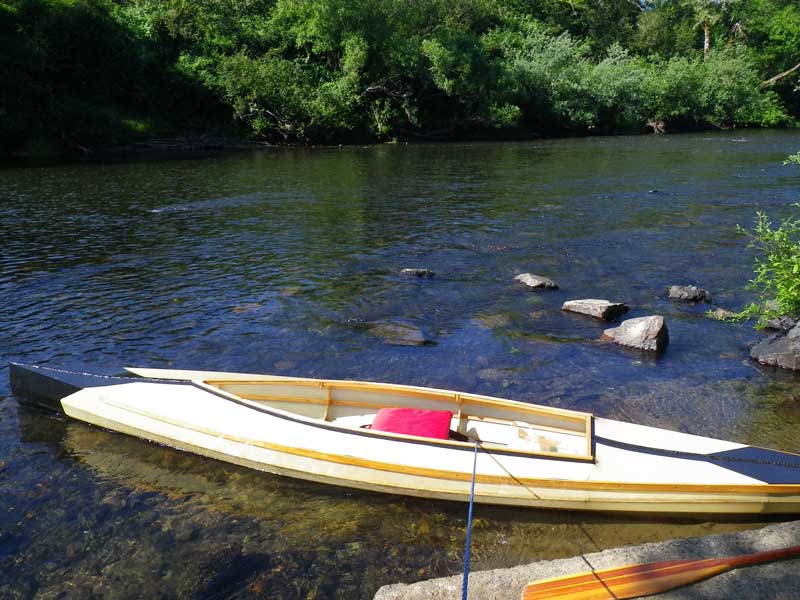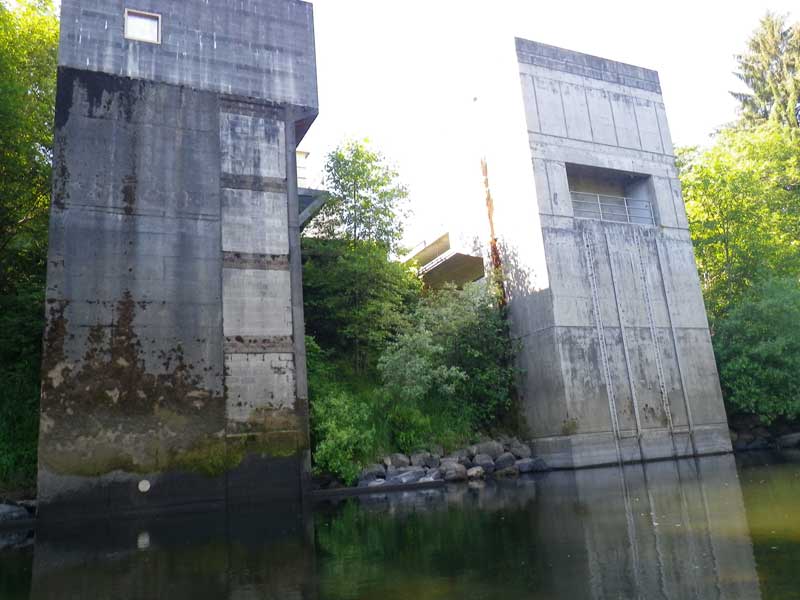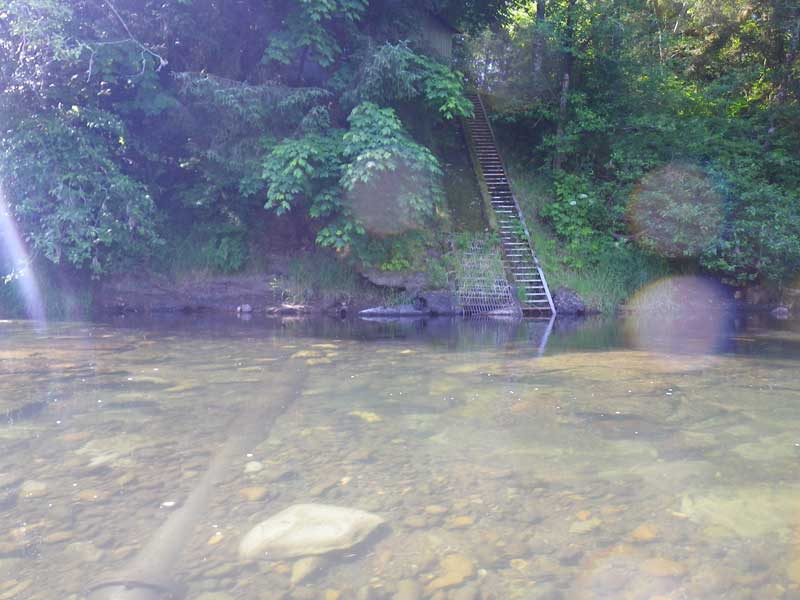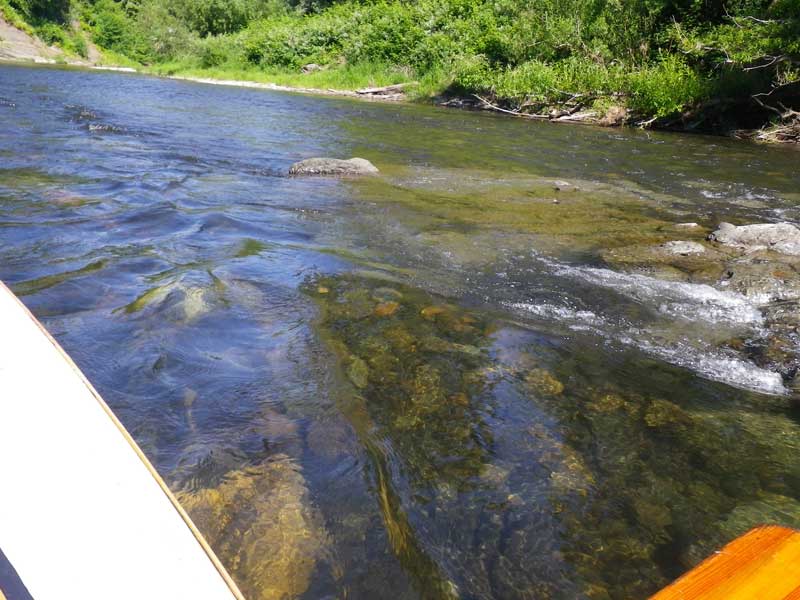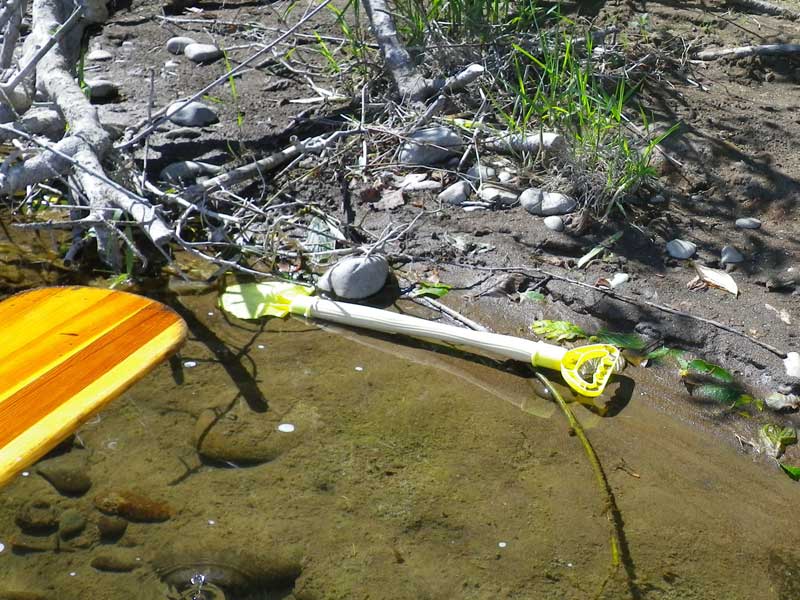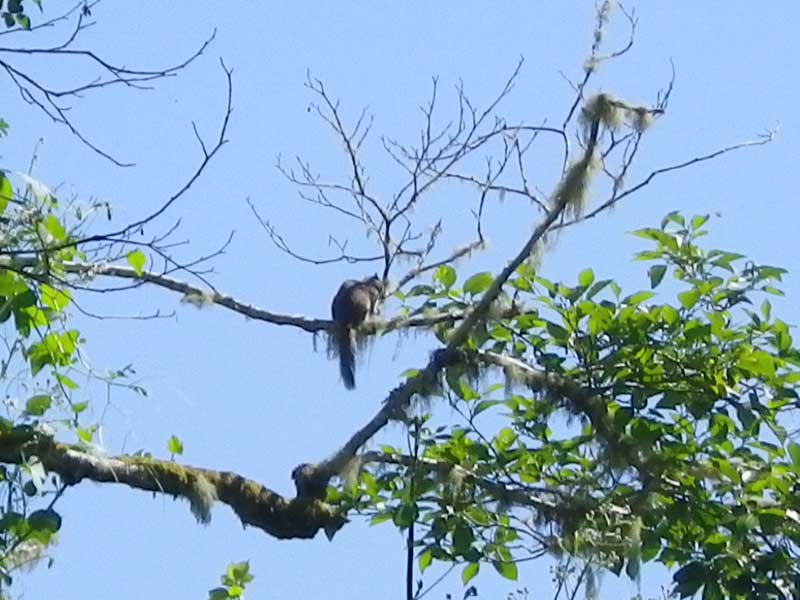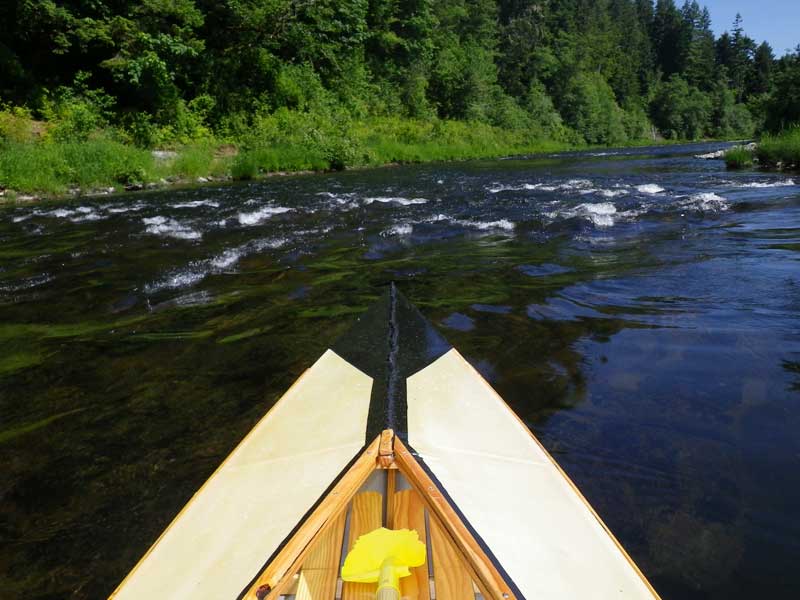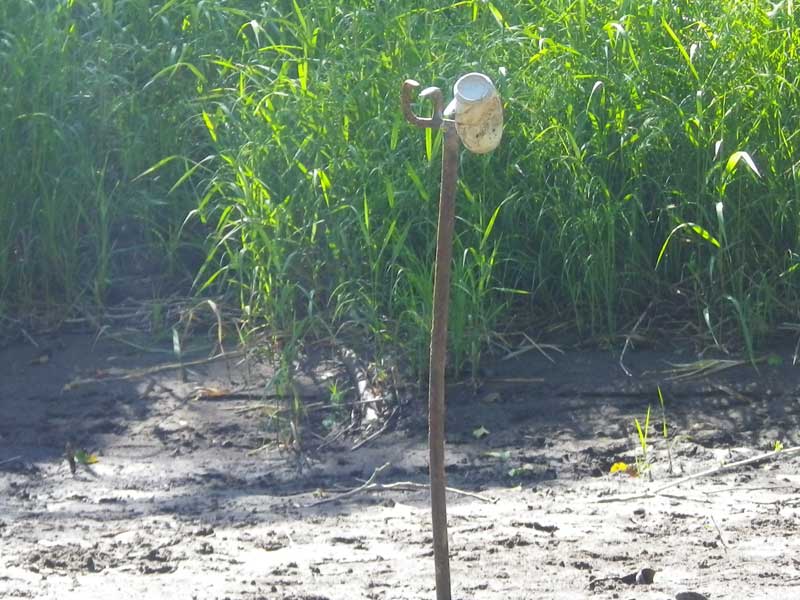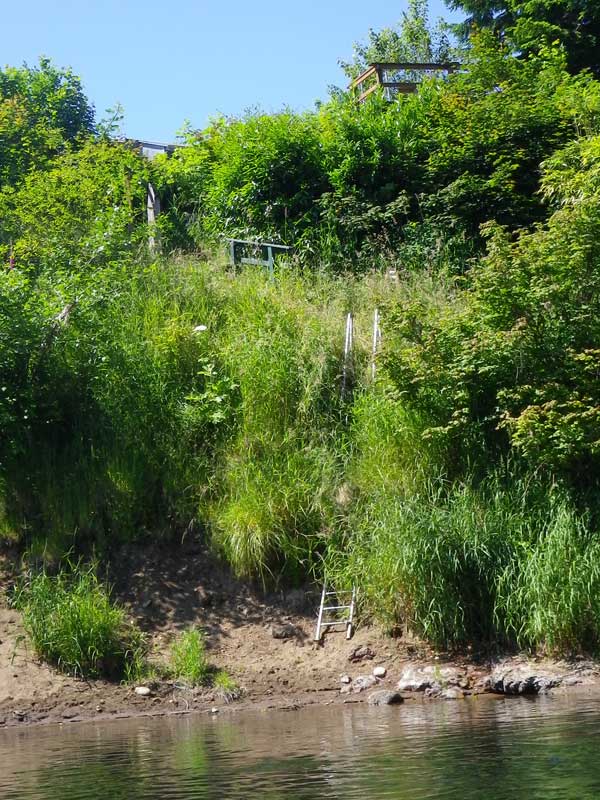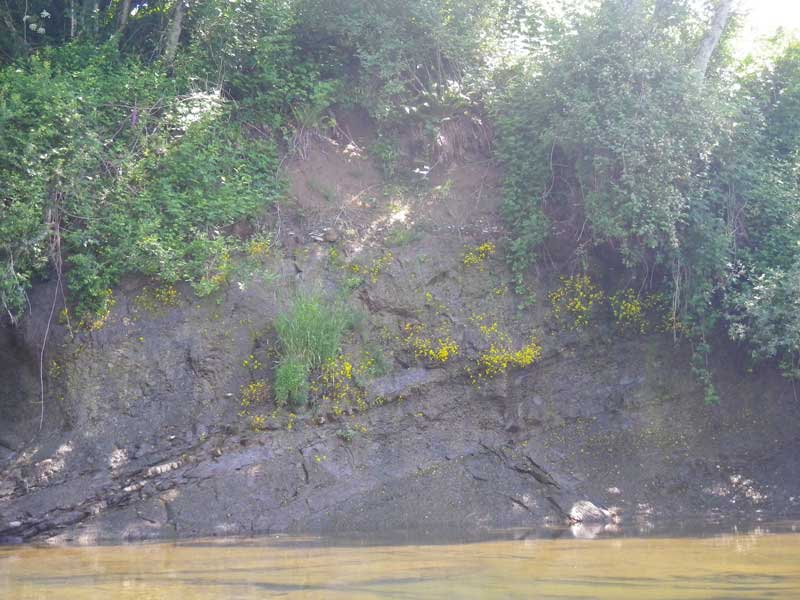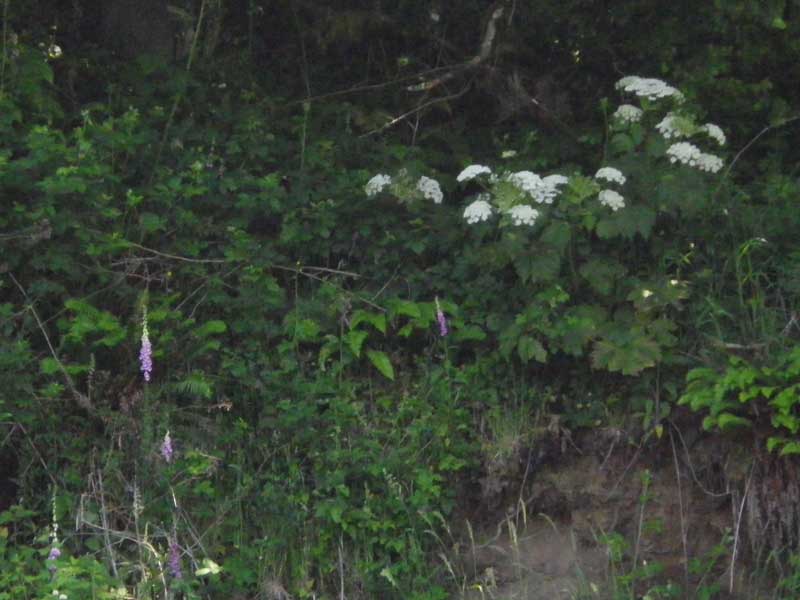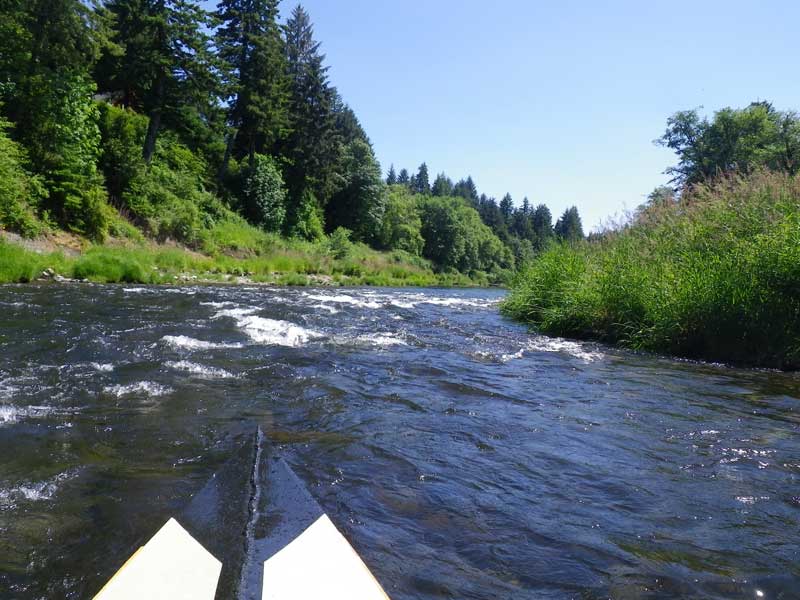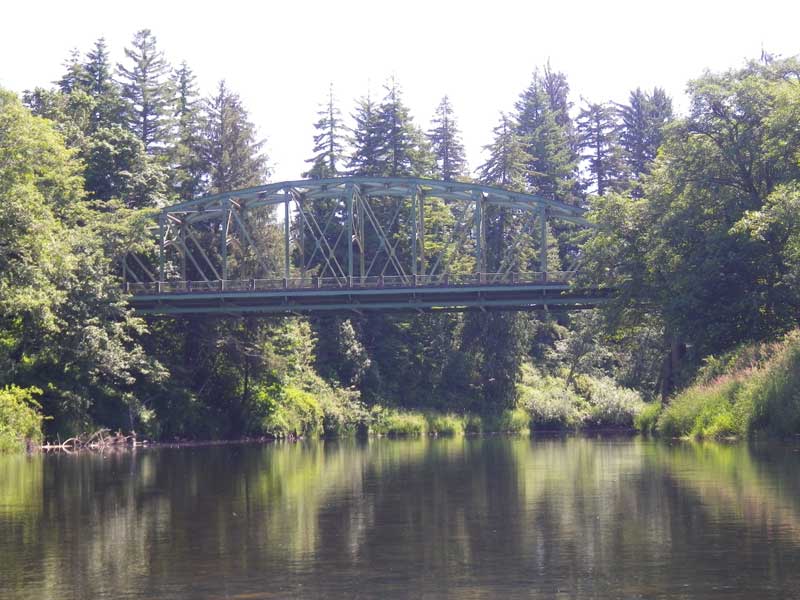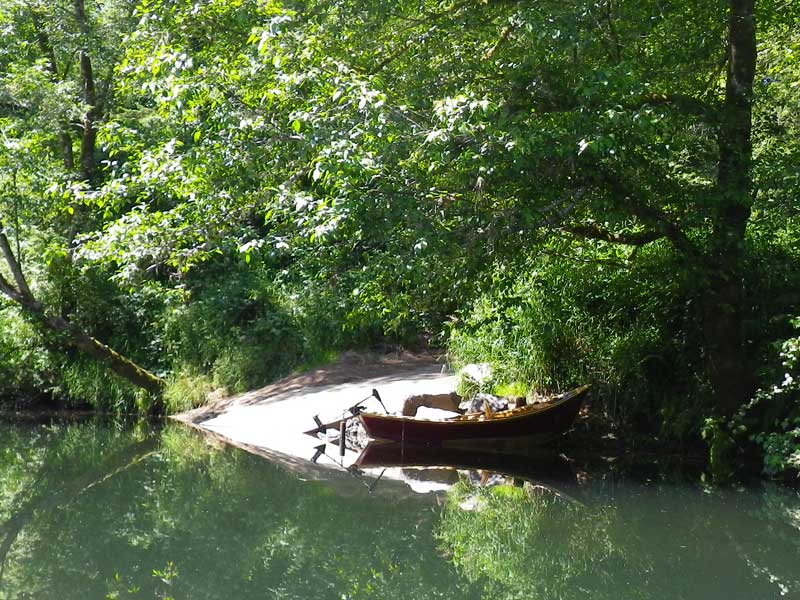|
Paddling around Siletz, July 1, 2011
Siletz is a tiny little ex-timber town on the Oregon coast, is home to the Confederated Tribes of the Siletz Indians, and is nearly surrounded by the Siletz River - making it a perfect place to go canoeing with just one car.
Step 1 is to drop the boat at Hee Hee Illahee park (the Siletz have adopted Chinuk Wawa as their official language. Chinuk Wawa is a trade language that can be spoken/understood with a few dozen words - the meaning comes from the context of the situation, the speaker's facial expressions and gestures. "Hee hee" indicates fun, play, joking, spoofing, even pranking, while "illahee" points towards location, land, area, ground, etc. Reasonable translations could be "playground" or "place for fun.")
I didn't really worry about leaving the Chuckanut there for a short time - someone would really have to look to see it from the parking lot. I loaded it with my food/water, cushions, and paddle. I kept my PFD with me - I really like my life jacket and would really be upset if it went missing.
The Old Mill Site has a nice parking area. I wonder who is more secure in their sexuality, me as a lesbian trapped in a man's body and driving a Forester or the guys in their Compensation Machines? (of course, they could need large pickups for their jobs or lifestyles, but where's the humor in that?)
It's a whopping half-mile from Old Mill to Hee Hee Illahee, an easy walk. My oh my, doesn't that Chuckanut look pretty? I am just as pleased as punch with that boat. A keen observer will notice I have a canoe paddle instead of a kayak paddle. As a canoeist, it always offends me when people paddle canoes with kayak paddles, but they do it all the time. Today, I figured I would return the favor.
The first landmark is the bridge. The Siletz is pretty shallow as it runs around the town and this is my first ever paddle in a skin-on-frame boat. Everyone on the internet says SOFs are rugged and tough, but you will always read that as an answer to a neophyte's question of "How well do these boats hold up?" Well' I'm about to find out.
The boat ramps have signs saying "Gas motors are not recommended" with text saying it is to maintain water quality. These huge pump houses must feed the town. Anyway, it is so shallow, only a mechanic would risk his motor and prop in this section of the river.
I couldn't tell what this was - a private access point with really steep launch and ladder? That big-assed pipe leads up to a structure on top, but that seems awfully expensive for a private operation.
Very wide, very shallow, lots of rocks. I rammed one of these submerged rocks with the bow so hard the boat stopped for a second and I was sure the skin had torn. I kept looking for leakage, but there wasn't any. This skin-on-frame stuff is pretty cool.
I flash of color caught my eye, and ever the conservationist, I paddled over to pick it up. Some kid lost his shovel :(
No large animals (deer, bear, or Sasquatch) but lots of Kingfishers and Great Blue Heron. It is good to see the Eastern Gray squirrels haven't penetrated this far and displaced all the Western Reds yet.
I wouldn't classify these as "rapids" but they certainly were hazards to navigation. The Chuckanut grounded out a few times - mostly dragging the stern (I was sitting more aft of center - raising the bow and lowering the stern.) I was pretty worried about tears in the skin.
Normally, I pick up any trash I find on the banks, but someone had taken this clam rake and beer can and made art out of it. As a clam rake can have value to someone, I didn't really feel it was 'trash,' so I left the art in place and continued.
Someone went to a lot of trouble to make this multi-landing stairway to the river. The ladder at the end speaks to the volatility of the waters - it's far cheaper to replace a washed out ladder than a set of stairs.
Fishermen. I'm always happy to see people out enjoying the river. I figured there were fish in the river, but even in this nice, clear water, I'd only seen a fingerling or two. I wished these guys luck and continued.
This spray of yellow caught my eye, but I was too far away to tell if they were flowers or some form of lichen growing on the rocks. Studying the picture, I'd bet on flowers.
OK, kids, which flowering plant is invasive or native to Oregon and which plant is poisonous or useful: The pretty Foxglove (Digitalis purpurea) on the left or that dull old Cow Parsnip (Heracleum maximum) on the right? This is sort of a trick question. The Foxglove is invasive - being pretty is a dead giveaway - and is poisonous to eat or, in some cases, even sniff. Cow Parsnip, on the other hand, is native to Oregon and has the wonderful property of changing from a tasty, celery-like edible to a caustic blister agent as it matures.
These I would almost classify as rapids, except they are really shallow - I grounded hard a few times. How'd those fishermen get upriver from here? I hadn't seen any landings or ramps. Must have been rowing like mad.
The second bridge - no more shallows.
And there's the ramp! That beautiful wooden drift boat was built as therapy by a guy who had suffered a stroke. Now he takes it from Toledo to Siletz where he and is dog, Abbey, go fishing as often as they can. I learned al this just by talking to him. Then, for some reason, I stood up in my kayak, and talked to him some more. The next thing I knew, I was in the water. I'd fallen so fast, the guy was a little freaked out "Hey! What happened? I was talking to you, looking right at you, then you were gone! It happened so fast, I thought you'd disappeared!" Lesson: Don't stand up in your kayak.
So here's the damage after al that scraping: Nothing. A quick coat of paint and I'm as good as new.
|

